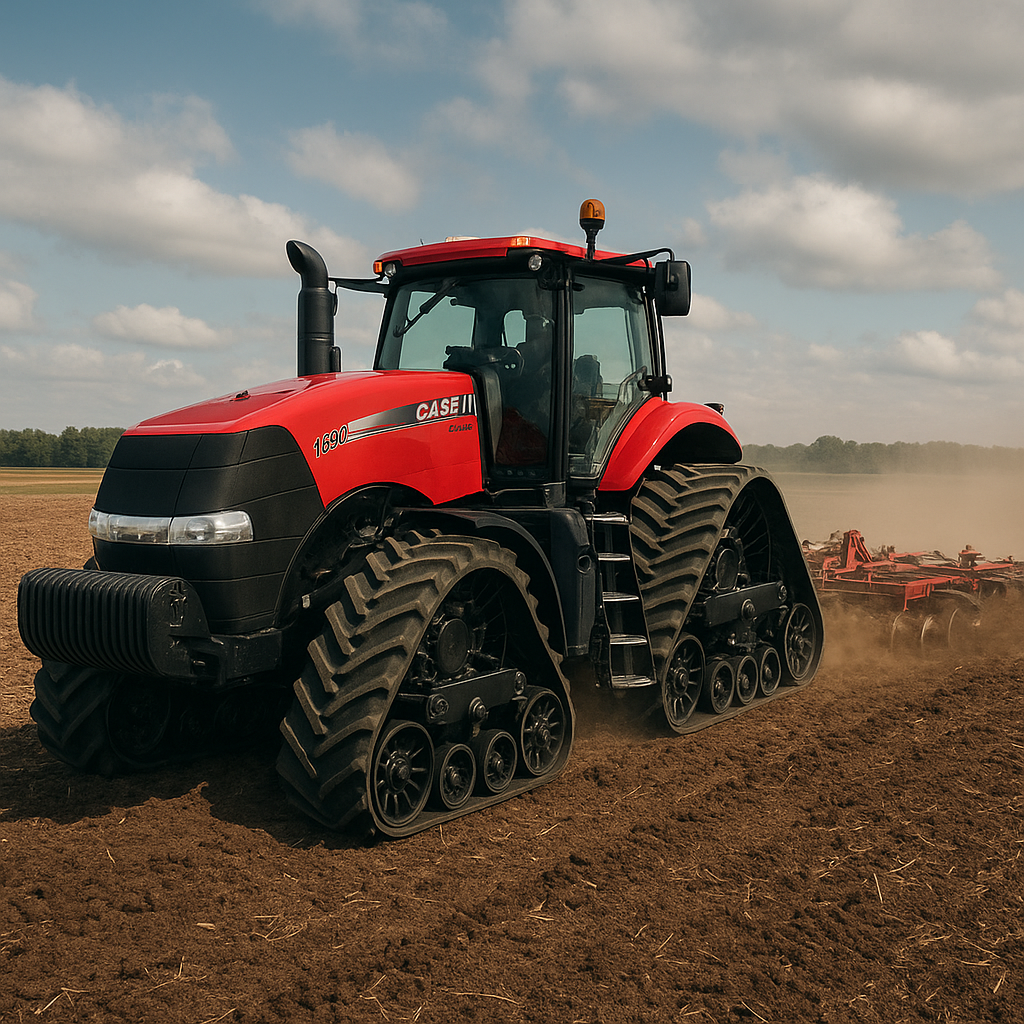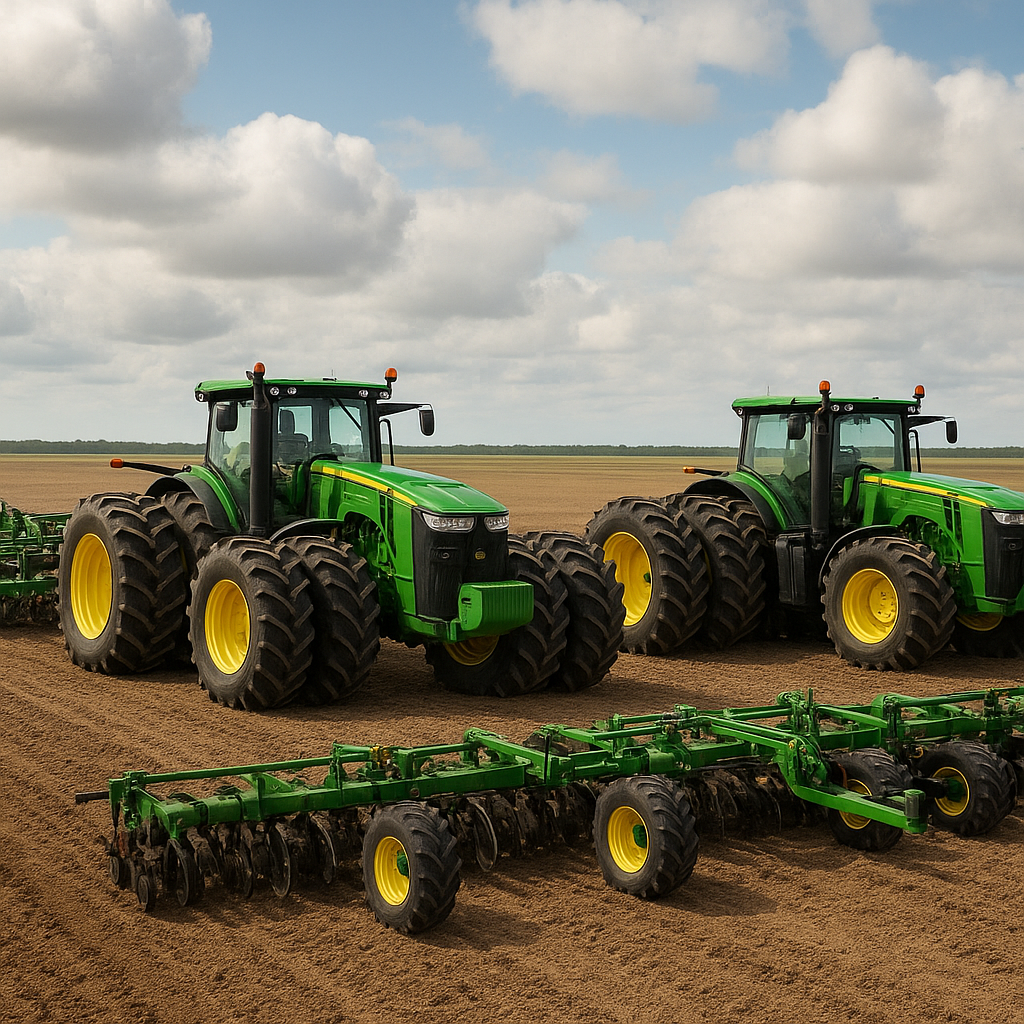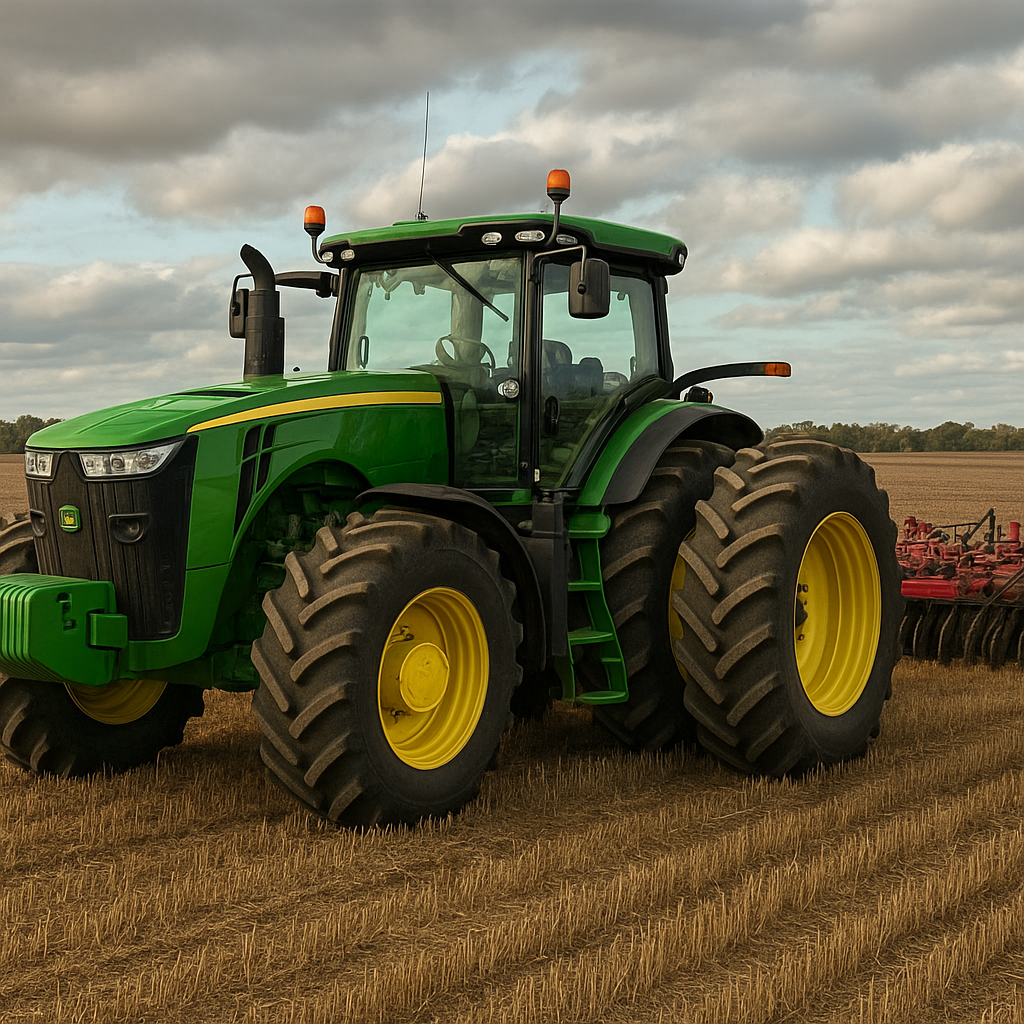Tractors have long been the backbone of modern agriculture, providing the power and efficiency needed to manage large-scale farming operations. As technology continues to advance, the capabilities of these essential machines have grown exponentially. This article delves into the latest advancements in tractor technology, highlighting the biggest and most powerful tractors currently available on the market.
Revolutionary Engine Technologies
One of the most significant advancements in tractor technology is the development of more powerful and efficient engines. Modern tractors are now equipped with engines that not only deliver higher horsepower but also comply with stringent emission standards. These engines are designed to maximize fuel efficiency while minimizing environmental impact.
High-Horsepower Engines
Today’s largest tractors boast engines with horsepower ratings that were unimaginable just a few decades ago. For instance, the John Deere 9RX series features models with up to 620 horsepower, making them some of the most powerful tractors available. These high-horsepower engines enable farmers to tackle the most demanding tasks with ease, from deep tillage to heavy-duty hauling.
Emission Control Technologies
In response to global environmental concerns, tractor manufacturers have integrated advanced emission control technologies into their engines. Systems such as Selective Catalytic Reduction (SCR) and Diesel Particulate Filters (DPF) help reduce harmful emissions, ensuring that these powerful machines meet the latest environmental regulations. This not only benefits the environment but also helps farmers comply with local and international standards.
Advanced Transmission Systems
Another area where tractor technology has seen significant advancements is in transmission systems. Modern tractors are equipped with sophisticated transmission systems that offer greater control, efficiency, and versatility. These systems are designed to handle the immense power generated by high-horsepower engines while providing smooth and precise operation.
Continuously Variable Transmissions (CVT)
Continuously Variable Transmissions (CVT) have become increasingly popular in the latest tractor models. Unlike traditional gear-based transmissions, CVTs provide a seamless range of gear ratios, allowing for smooth and efficient power delivery. This results in improved fuel efficiency and reduced wear and tear on the engine and transmission components.
PowerShift Transmissions
PowerShift transmissions are another advanced option available in modern tractors. These transmissions allow for quick and easy gear changes without the need to manually engage a clutch. This not only enhances operator comfort but also improves productivity by reducing downtime during gear changes. PowerShift transmissions are particularly beneficial in applications that require frequent changes in speed and direction, such as loader work and field operations.
Precision Agriculture and Smart Technology
The integration of precision agriculture and smart technology has revolutionized the way farmers manage their operations. Modern tractors are now equipped with a range of advanced features that enhance efficiency, accuracy, and productivity. These technologies enable farmers to make data-driven decisions, optimize resource use, and improve overall farm management.
GPS and Auto-Steering Systems
One of the most impactful advancements in tractor technology is the incorporation of GPS and auto-steering systems. These systems allow tractors to navigate fields with pinpoint accuracy, reducing overlap and ensuring precise application of inputs such as seeds, fertilizers, and pesticides. This not only saves time and resources but also minimizes environmental impact by reducing the over-application of chemicals.
Telematics and Remote Monitoring
Telematics and remote monitoring systems provide farmers with real-time data on the performance and condition of their tractors. These systems enable remote diagnostics, allowing for proactive maintenance and reducing the risk of unexpected breakdowns. Additionally, telematics can track fuel consumption, engine hours, and other critical metrics, helping farmers optimize their operations and reduce costs.
Enhanced Operator Comfort and Safety
Modern tractors are designed with operator comfort and safety in mind. Manufacturers have made significant strides in improving the ergonomics and safety features of their machines, ensuring that operators can work efficiently and comfortably for extended periods.
Ergonomic Cab Designs
The cabs of today’s tractors are equipped with a range of features designed to enhance operator comfort. These include adjustable seats, climate control systems, and advanced suspension systems that reduce vibrations and provide a smoother ride. Additionally, modern cabs offer excellent visibility, reducing operator fatigue and improving overall safety.
Advanced Safety Features
Safety is a top priority in the design of modern tractors. Advanced safety features such as rollover protection systems (ROPS), seat belts, and emergency stop buttons are now standard in many models. Additionally, some tractors are equipped with collision avoidance systems and cameras that provide a 360-degree view of the surroundings, further enhancing operator safety.
Conclusion
The latest advancements in tractor technology have transformed these essential machines into powerful, efficient, and intelligent tools that are crucial for modern agriculture. From revolutionary engine technologies and advanced transmission systems to precision agriculture and enhanced operator comfort, today’s tractors are designed to meet the demands of large-scale farming operations. As technology continues to evolve, we can expect even more innovations that will further enhance the capabilities and efficiency of these indispensable machines.









